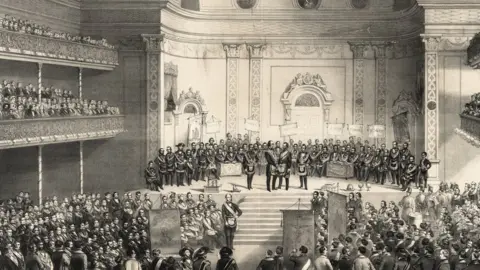Why More People Are Exploring to Join Freemasonfor Success
Why More People Are Exploring to Join Freemasonfor Success
Blog Article
Discovering the Mysteries of the Freemason: What You Need to Know
The Freemason, a term typically shrouded in intrigue and debate, represents a complex tapestry of historical truth and contemporary misconception. Developed in the late 18th century, this secret society was initially rooted in the Enlightenment's ideals but has considering that come to be synonymous with conspiracy concepts concerning elite control. As we browse the beginnings, key figures, and the stark contrast between misconception and fact, one have to consider just how these stories affect contemporary perceptions of power and privacy. What could be disclosed via a more detailed exam of these aspects can test long-held assumptions regarding the shadows that stick around in our culture.
Origins of the Freemason
The beginnings of the Freemason are soaked in a blend of historic intrigue and ideological eagerness. Developed in 1776 in Ingolstadt, Bavaria, by Adam Weishaupt, the group was originally created as a secret culture focused on promoting Knowledge ideals such as reason, secularism, and the splitting up of church and state. Weishaupt, a professor of canon legislation, looked for to test the prevailing authority of the church and state, which he considered as oppressive establishments stifling intellectual and personal liberty.
The Freemason sought to hire prominent participants from various societal markets, consisting of politics, academia, and the arts, to promote a network devoted to these Knowledge principles. The society run under a shroud of privacy, using coded language and rituals to secure its participants from persecution, especially provided the repressive environment of the moment. Nonetheless, the Freemason dealt with considerable resistance from both governmental authorities and religious organizations, which saw the group as a threat to their power.
Trick Numbers and Participants
That were the crucial numbers that formed the Freemason's early impact and direction? The Bavarian Freemason, started in 1776 by Adam Weishaupt, arised as a reaction to the oppressive societal frameworks of the time.
One more significant figure was Johann Gottlieb Fichte, a noticeable thinker whose ideas on nationalism and education reverberated with the Freemason's objectives. Although Fichte was not an official participant, his philosophical supports influenced the group's ideological background. Furthermore, figures like the author and philosopher Johann Wolfgang von Goethe were related to the more comprehensive intellectual motions of the time, although their straight involvement with the Freemason continues to be disputed.
These essential figures added to the Freemason's early instructions, pushing the borders of political and social thought, while their collective efforts intended to challenge established standards and foster an environment of progressive change in Europe.
Misconceptions vs. Reality
Several mistaken beliefs border the Freemason, often mixing reality with fiction in a way that obscures its real nature. The his explanation idea that the Freemason continues to exert significant influence over world events is a misconception - how to become a freemason.
An additional prevalent myth is that the Freemason comprises a network of elite people manipulating worldwide events. In reality, lots of conspiracy theory concepts exaggerate the group's relevance, connecting misguided motives to societal patterns and occasions. This has resulted in an oversimplified sight of intricate concerns.

Modern Analyses
Contemporary analyses of the Freemason often reflect broader societal anxieties and an attraction with secrecy and power. This modern lens frequently associates the Freemason with conspiracy theories that suggest a covert elite orchestrates world events, redirected here manipulating governments and economic climates for their own gain. Such narratives take advantage of a deep-seated wonder about of authority, particularly in times of dilemma or social upheaval.

Furthermore, some contemporary interpretations frame the Freemason as an allegory for the intricacies of globalization and the interconnectedness of significant people and companies. This point of view motivates a vital evaluation of just how power characteristics run in today's globe, highlighting the balance between transparency and privacy in administration and business techniques.
Social Influence and Tradition
Influenced by centuries of intrigue, the cultural influence and legacy of the Freemason extend much past its historic origins. This secret society, developed in the late 18th century, has actually permeated various elements of popular culture, from literary works and movie to music and art. The principle of the Freemason has actually developed into a sign of conspiracy theories, Learn More Here usually standing for a viewed surprise power controling global occasions.
In literature, writers like Dan Brown have actually woven the Freemason into detailed stories, captivating viewers with styles of privacy and power. Movies such as "National Treasure" and "The Da Vinci Code" better continue the allure of the culture, blending truth with fiction to produce engaging stories.
The Freemason's influence additionally extends right into music, with musicians referencing the organization to stimulate motifs of rebellion and social review. This representation has added to a fascination with the concept of clandestine teams managing the bars of power, reflecting social stress and anxieties regarding authority and openness.
Ultimately, the Freemason's heritage is a complex tapestry of misconception and reality, shaping assumptions of secrecy and control in modern discussion. Its enduring visibility in culture highlights mankind's perennial pursuit for recognizing covert facts.
Conclusion
The exploration of the Freemason exposes an intricate interplay between historic realities and modern myth-making. Established in the Knowledge era, this society intended to test overbearing structures, yet its heritage has been overshadowed by conspiracy concepts that recommend elite manipulation. Understanding the distinctions in between the initial ideals and contemporary interpretations is necessary for understanding the withstanding fascination with the Freemason and its substantial influence on cultural narratives surrounding power and secrecy in society.
Report this page